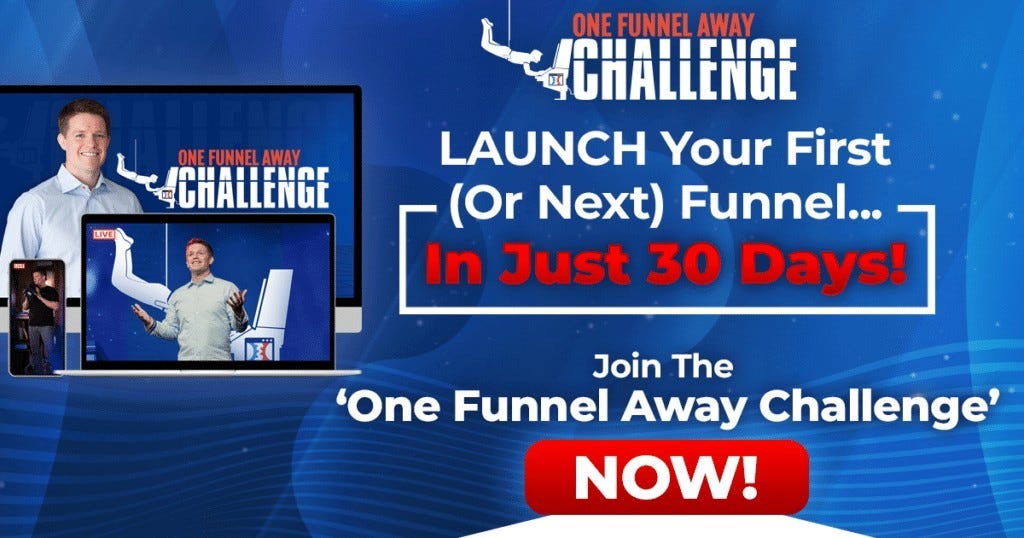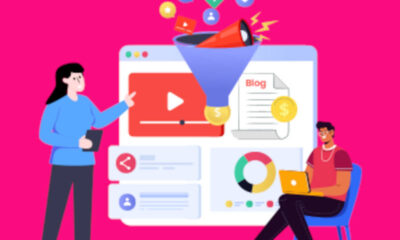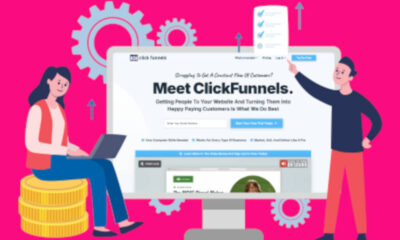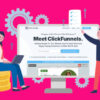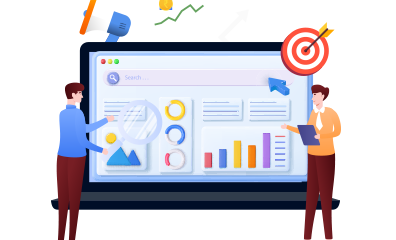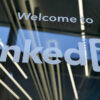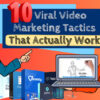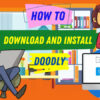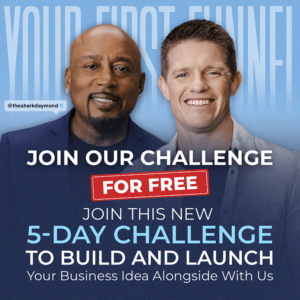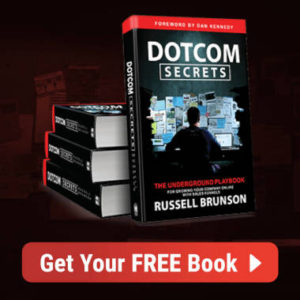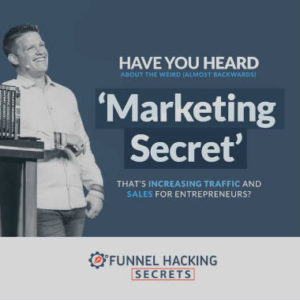Free
10 Ways To Market Your Business Online
Looking for the highest octane ways to market your new business?
Here, we’ve collected what we think are the top 10 best ways to market a business in today’s world.
They will help you build brand awareness, generate leads, and make sales.
Before we get into that, though, let’s talk about why you should always start with a sales funnel (and introduce something we call “The Dream 100”).
Why You Should Always Start With a Sales Funnel
Mapping out your sales funnel is ground zero for marketing your business.
Before you start working on getting influences to work with you, or running ads, or getting sponsorships, make sure you know what you will do when people visit your website.
That’s where your sales funnel comes in.
A sales funnel is a series of pages that are designed to get people to become leads or customers.
It’s different from your typical website — check out the video below.
Where a website often behaves more like a brick wall that keeps people from taking action…

… a sales funnel is a door that leads only to one specific action — and has a higher conversion rate because of its single-minded focus.

So… how do you build a sales funnel?
We’ve created a 30-day challenge where we’ll walk with you side-by-side and help you do just that — you’ll build your first sales funnel from scratch!
Click below to dive in!
Leverage The Dream 100 Process
You understand what a sales funnel is. That’s important for marketing your business. But before we talk about our top 10 tactics, there’s one other idea we want to discuss. We call it The Dream 100.
It’s a process that any business can use to build brand awareness, generate leads, and make sales.
In fact, it’s the exact process Russell Brunson has used to grow ClickFunnels to a business worth over $100 million (without any venture capital).
Check out the video below.
Here’s the gist.
People who might be interested in what you have to offer are already gathering on different websites and online platforms. They are listening to the same podcasts, reading the same blogs, and following the same Instagram influencers. What if you could reach these people with your business, message, and offers?
That’d be super valuable, right?
Heck ya!
The first step is to make a list of 100 different places — hence the name, although it could be more or less than 100 — where your dream customers already congregate online.
Find…
- 10+ top websites & forums where they spend time
- 15+ active Facebook groups
- 50+ influencers they follow on social media
- 30+ podcasts they listen to
- 40+ email newsletters they read
You could also target YouTube Channels, blogs, or even magazines.
Once you’ve got a list, you can either…
Work your way in — This means reaching out and building relationships with key people. It’ll include guest blogging, being a guest on other people’s podcasts, and sending free products to influencers for their review.
Buy your way in — This means you pay money to insert yourself into the conversation. That could be through advertisements, sponsorships, or agreements with influencers.

This is the foundation of your lead-gen strategy because it tells you where your target market is — and once you know where they are, you can create a plan for inserting yourself into the conversation.
As Russell Brunson explains…
“The core strategy to understand is that your dream customers have already been congregated by your Dream 100. If you focus on identifying them and marketing to them, your dream customers will start flowing into your funnels faster than by anything else you could do.”
To learn more about the Dream 100, pick up your free copy of Russell’s bestselling book, Traffic Secrets, by clicking on this link.
You can use this Dream 100 process regardless of the tactics you decide to utilize below — just choose your tactics and then follow the Dream 100 process. It’s the yellow brick road to success.
Brand Awareness
First, let’s talk about brand awareness. These are proven marketing strategies that will help you garner awareness amongst your target market.
1. Search Engine Optimization (SEO)
What’s something that your target market searches for on Google?
If you sell running shoes, then your target market likely searches for things like “best running shoes” or “running shoes without shin pain”.
In fact, you can find out exactly what your target market is typing into Google by using a tool like Ubersuggest.

Just type in a keyword to find out how much monthly search volume it has in Google.
Wouldn’t it be nice if those people were ending up on your website?
Well, that’s what SEO is all about — optimizing your website to rank on page one for specific high-value keywords.
For example, I’ve been working with a SaaS company called REISift for about a year now. When we started working together, they had absolutely no SEO traffic whatsoever.
Over the last year, we’ve been publishing one to two blog posts per month targeting keywords that their target market (real estate investors) type into Google.
And now they’re driving 2,000 visits per month through Google!

Cool, right?
That’s the power of SEO.
It increases brand awareness, drives traffic, and even helps to generate leads.
So… how do you do it?
We’re not going to go into depth about that here. But check our guide on SEO over here to get a primer.
2. Sponsorships
Ever been interrupted by ads when listening to your favorite podcast?
How about when reading your favorite email newsletter?
Well, those ads are paid slots.
And you can book those lots for your business — that’s a great way to build brand awareness.
The key is finding podcasts or newsletters that specifically serve your target market.
The more niche-specific it is to your dream customers, the better.
For example, I recently ran sponsorships in a newsletter to a digital product I created for freelance writers. Here’s the product…

And where did I sponsor that product?
In a newsletter for freelance writers, of course! Specifically, one called Funds For Writers…

The sponsorship cost me $200 for three slots and I made about 20 sales. My product cost $47 so that means I made about $740 after the cost of the sponsorship.
Not bad, eh?
More importantly, I increased brand awareness for my freelance writing coaching and courses.
Sponsorships are great for building brand awareness but they can also be used to generate leads and sales if you do them correctly.
3. Public Relations
PR is a process of building relationships with journalists, bloggers, and other influencers in your industry to get them to talk about your brand.
(The “work your way in” part of the Dream 100 process works really well for this)
It’s kind of like getting free advertising.
Here’s an example of a title that does well on many sites for PR efforts…

There are a lot of different ways to negotiate organic placements in blogs and media outlets that your target market pays attention to.
Here are some ideas…
- Hire a PR Expert — You can hire a PR agency to help you with this process. They will help you get placements, but it can get expensive quickly.
- Build Relationships — If you have a small budget or want to save some money, you can also reach out to journalists, blogs, and influencers directly and try to build relationships with them. This will often result in organic placements. Use the Dream 100 process!
- Write — Another option is simply to pitch your guest posts to blogs where you want publicity. They’ll usually let you include a mention of your brand or product in the article or at least in your bio.
- Guest — Or you can offer yourself as a guest on podcasts that your target market listens to. They’ll usually let you promote your business at the end of the episode before signing off.
These are all great ways to get your brand in front of a new audience without spending tons of money.
And remember, the goal here is to increase brand awareness. So, even if you don’t get any sales or leads from your PR efforts, it’s still worth it.
4. Influencer Marketing
Influencers have an audience of people within your target market.
Not only that, but that audience attentively listens to what the influencer has to say.
The value of getting that influencer, then, to recommend or promote your products is obvious.
Here’s an example…

PR is like social media, but it focuses on promoting products or services. For example, let’s say you have a product that helps people save money on their groceries. You could reach out to an influencer who talks about budgeting and see if they would be interested in doing a review of your product on their YouTube channel or Instagram account.
It is important that when you are doing influencer marketing, you target influencers who have an audience that is relevant to your business. Otherwise, you will not be reaching the people who matter and it will be a waste of time and money.
Lead Generation
Now we’re going to talk about marketing tactics that will help you generate leads (i.e. grow your email list).
In today’s world, the email list is the lifeblood of your business.
It’s where you’ll build rapport, create customer relationships, and make sales.
Here’s how you can grow your email list.
5. Lead Magnets
A lead magnet is an opt-in offer that you give away in exchange for an email address.
It’s a piece of content — PDF, ebook, audio clip, video course, etc. — that provides value to your target market and entices them to sign up for your email list.
For example, if you were in the business of helping people save money on their groceries, you could create a lead magnet that shows them how to do just that.
Or, if you were in the business of helping people get out of debt, you could create a lead magnet that shows them how to create a budget.
You get the idea.
The key with lead magnets is to make sure they’re high quality and deliver on their promise.
If you create something that’s truly valuable and useful, people will be more than happy to sign up for your email list.
And once you have their email address, you can start building a relationship with them and eventually sell them your products or services.
6. Advertisements
How are you going to get people to sign up for your lead magnet?
Well, you can use some of the ideas listed in the brand awareness section (such as SEO and public relations).
But you can also run advertisements.
For example, you could run a Facebook ad that points to your lead magnet opt-in page.

Or you could run a Google AdWords campaign and target keywords related to your lead magnet.

The key with ads, however, is to make sure you’re targeting the right people.
You don’t want to waste your money on ads that are shown to people who have no interest in what you’re selling.
That’s why it’s important to use targeting options like demographics, interests, and behaviors when setting up your ad campaigns.
By doing so, you can be sure that your ads are only being shown to people who are likely to be interested in your products or services.
7. Webinars
Webinars are a great way to generate leads.
In fact, it’s one of our all-time favorite lead gen tactics here at ClickFunnels. It’s how Russell created buzz for our business!

They’re essentially online seminars or workshops that you can use to educate your target market on a particular topic.
And, at the end of the webinar, you can even offer a product or service that you’d like to sell.
This means you can generate leads on the front end (during registration) and make sales on the back end (at the end of the presentation).
Check out our guide over here to build a webinar funnel!
Sales
Finally, we’re going to share three of the best tactics for making sales.
Here they are.
8. Tripwire Funnels
A tripwire funnel is a type of sales funnel that is great for making sales. It starts with a low-level offer and then promotes a one-time offer with a heavy discount once the person has already entered their shipping and payment information.
Let’s take a look at an outline of the Tripwire Funnel…

Here are some more details with examples of each page…
Two-Step Sales Page — First, visitors arrive at the sales page. This page offers such a no-brainer deal that your target market can’t possibly resist. It’s sort of like a lead magnet except you’re offering it for a small amount of money, usually anywhere from $1 to $50 (depending on your industry and target market). This page requires people to enter their shipping and payment information to continue through the funnel.

OTO Page — Next, visitors go to the One-Time Offer Page. This page offers the thing that you’re actually trying to sell. It’s a bit more expensive than the thing you offered on the first page but heavily discounted and with some strong FOMO since it’s a one-time offer. The typical friction of inputting shipping and payment information is already taken care of (that’s where most people abandon their shopping cart) and so the OTO Page usually converts at a surprisingly high rate.

— This is your receipt and/or thank you page.

Tripwire Funnels do really well for converting cold traffic into customers or for getting warm leads who’ve never purchased before to finally take the leap.
If this sounds like the ticket, you can download your first Tripwire Template over here for free — then you can customize it using ClickFunnels’ software.
9. Soap Opera Sequence
Earlier we shared some marketing tactics for building your email list.
But… once you’ve got people on your list, once you’ve delivered the lead magnet… then what?
The next step is to try and sell those people one of your primary products using a series of emails.
We’ve lovingly dubbed this strategy the “soap opera sequence”.
Because, like a soap opera, the emails guide the visitor irresistibly from one “episode” (email) to the next… and eventually to buying your products/services.
Here’s a great breakdown of how this email sequence works from Ryan Wegner…
The soap opera sequence basically consists of 5 emails sent over 5 days (one a day).
You set the stage, create high drama, share your epiphany, discuss hidden benefits, and then use urgency to push the lead over the fence.

If you want a more detailed explanation of how this works, get a free copy of Russell Brunson’s bestselling book, DotCom Secrets ← just pay shipping.
10. Seinfeld Emails
Once someone has finished going through a soap opera sequence… what’s next?
Whether they buy or not, you shouldn’t stop emailing them.
After all, just because someone didn’t buy five days after they signed up for your email list certainly doesn’t mean they’ll never buy.
49% of businesses say that most of their leads require “long cycle” nurturing, according to Ascend2.
So it’s worth your time to keep emailing people who’ve bought before… and people who’ve never bought.
But… what do you send?
Daily Seinfeld emails — check out the video below!
Basically, Seinfeld emails are just daily emails that catch the recipient’s attention, tell a story, and make an offer relevant to the story that was told.
These can be paid offers or free offers — there should be a healthy mix of both.
Now you might be nervous about emailing every day, but you could use the same strategy and email just a few times a week or even once a week.
The important thing is to stay in contact with your entire list — to continue building authority, and to continue making them offers.
Once you get in the habit, writing these emails should just take 15 minutes or so every morning — you can use the hook-story-offer format to write them…
- Hook — Get the recipient’s attention with a curiosity-inducing subject line.
- Story — Tell a compelling and interesting story.
- Offer — Offer a product or service that’s related to the story you told.
Here’s an example…

Russell Brunson (and many other online marketers) have found that you can make about $1 per subscriber per month. This number increases when you email more often. Seinfeld emails are a great way to nurture your leads, build trust, and keep your email list actively buying.
You can learn more about Seinfeld emails in Russell Brunson’s bestselling book, DotCom Secrets ← use that link to get it for free.
Final Thoughts on Marketing Your Business
There are many ways to market your business. But you don’t have to do them all! In fact, it is better if you focus on a few and do them well. As the saying goes, less is more.
Click the link below if you’re ready for the next step — to build your high-converting sales funnel that will make the most of your marketing efforts!
>>>Join The One Funnel Away Challenge<<<



